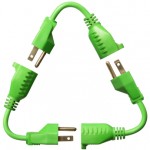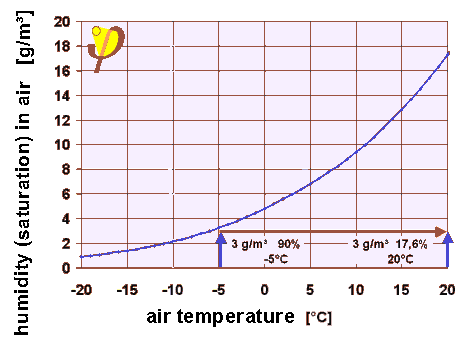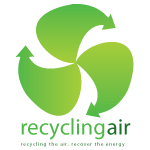The main goals of ERVs/HRVs, besides the energy recovery, are to ensure air quality and high comfort thanks to:
1. a constant air change, for an optimal oxygenation and elimination of pollutants and airborne particules (if equipped with HEPA filters)
2. a constant and optimal temperature and humidity (22°C, 40-50%), entering continuously a low flow of “fresh” air preheated and humidified (in winter) or cooled and dehumidified (in summer).
3. a significant noise reduction obtained with a silent ventilation at “closed windows”
The ERV and HRV are complementary technologies because the HRV can operate in extreme conditions of humidity and low temperatures, but recovers only the sensible energy, instead the ERV with its enthalpic core (permeable to moisture = latent energy) allows in the summer to dehumidify the ingoing air from outside using the exhaust but drier indoor air expelled outside, and thereby reduce the air conditioner (AC) consumption, as you know an AC consumes about 2/3 of energy to dehumidify the air and the remainder to cool.
The truth is, the more humid the climate, the more energy is saved by an ERV.
A common misunderstanding though, is that an ERV works as a standalone unit, which is only partly true. If there is nothing keeping the temperature and humidity down indoors, there is no differential in vapor pressure between the air streams, and consequently, no exchange of humidity between the air flows. In short, an ERV should work in concert with a properly sized air conditioner.
There is no point in leaving more than 50% of the energy for the birds, no matter where the technology is used. ERVs does work very neatly, especially in humid areas.
In addition the ERV, in moderately cold climates such as in Western Europe, keeps the indoor humidity at an optimum level (40%) humidifying the outdoor ingoing air that contains very low (absolute) moisture rates [g/m³], thus avoiding the need to consume more energy to humidify the indoor air in winter that often tends to fall below 30%.
We often tend to think that in winter the air is more charge of moisture respect to summer, but the reality is exactly the opposite and we have a confirmation when we dry the clothes in gellide days even in the absence of sunlight. We feel the frost when the sun goes down, because comes down on the humidity.
In winter, outside absolute humidity can easily be as low as 2 grams per kg air and less (-10°C and 100% RH is equivalent to AbsH of about 2 grams/kg air) which means that if you take that air and heat it, the absolute humidity will be the same but the relative humidity will drop drastically when heated to 20°C.
For example: if outdoor temperature is -5°C and 90% RH, and that air is heated to 20°C, the resulting indoor RH is only 17,6%. One has to keep in mind though, there are several anthropogenic sources of moisture indoors that vary greatly over the hours of the day that may affect indoor air quality negatively. The problems arise if the ERV is “too efficient”, or rather, that the ventilation rate is so low that excess moisture (indoor RH of 70% and above) is not vented but returned with ingoing air from the ERV to add to the indoor air. This is a typical situation where a by-pass could kick in.
Ultimately though, the key is to balance air flow, regeneration and HVAC equipment to optimally suit not only your house, but your way of living. An ERV increase comfort in a cold climate in winter, assuring an optimal RH level (more than 30%) and recovering the total energy (called enthalpy = sensible energy + latent energy (humidity)). Besides too low RH levels (typically less than 10-15%), will result in material issues (eg wood cracks) and health problems such as decreased resistivity to airborne pathogens, dried out humus membranes in throat and nose, itchy skin, irritated eyes and tiredness etc..
Ultimately, I guess my own best recommendation would be to get a couple of loggers for temp and RH (eg Hobo) and do some monitoring of the actual indoor conditions over time. If coupled with weather data, I’m sure you can deduce what’s best for you and your house. In the long run, knowing the house will be your best bet to increase comfort and lower energy bills.










 KlimaHouse
KlimaHouse LifeBreath
LifeBreath Mitsubishi electric
Mitsubishi electric sanuvox
sanuvox Amatrice – Club Alpino Italiano
Amatrice – Club Alpino Italiano Amatrice – Comune
Amatrice – Comune Amatrice – Parco Nazionale
Amatrice – Parco Nazionale amatrice.net
amatrice.net amatriciana.org
amatriciana.org Excursions
Excursions News
News

Leave a Reply
You must be logged in to post a comment.